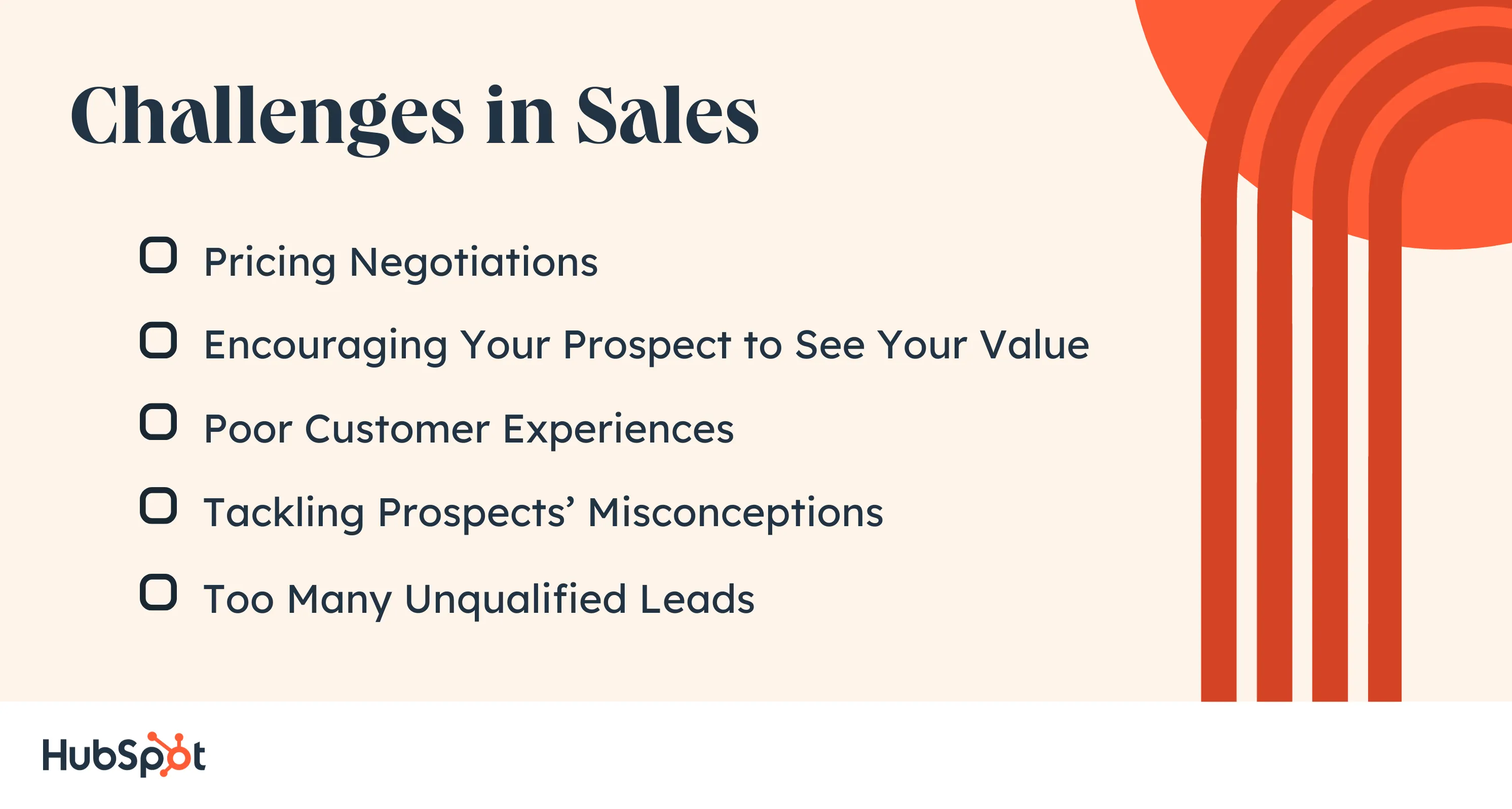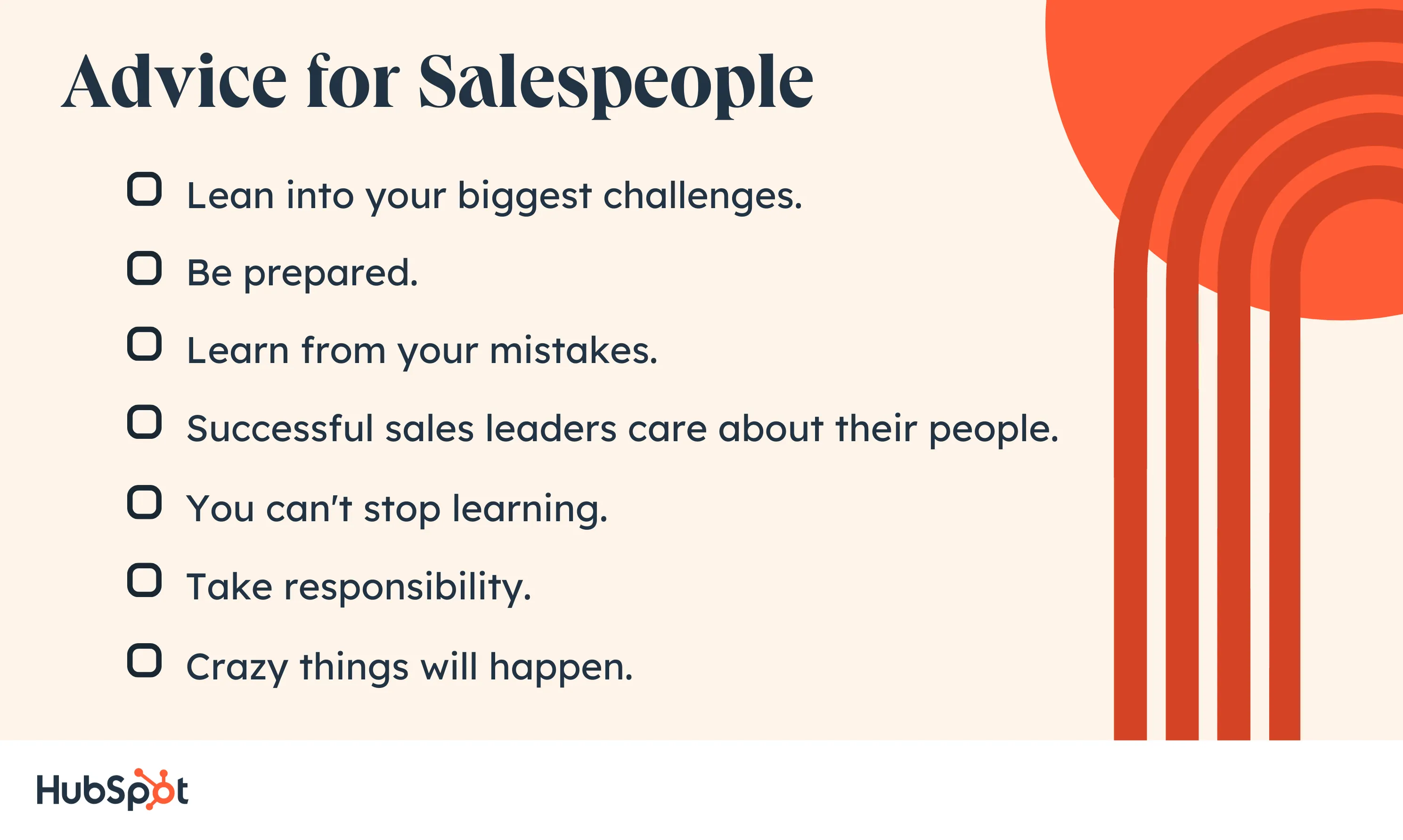No one knows what it’s like to work in sales better than those in the trenches of the day-to-day — salespeople trying to hit their numbers while battling the ups and downs of the job.

If you’re thinking about a career in sales, you probably want to hear the cold, hard truths about sales and what it entails. So, we partnered with some of the best sales professionals to give you their insights, including the biggest challenges and tips to get past them.
In this article:
Challenges of Working in Sales
We spoke to salespeople who shared their biggest challenges and some of their tips for resolving them. Read on and learn from people already in the field.

Pricing Negotiations
There’s no doubt that at some point in your career, you will deal with pricing negotiations. Some people won’t easily part with their hard-earned cash for your product or service.
Brian Wittman, owner of SILT Real Estate and Investments, LLC., agrees that one of his biggest challenges is pricing. He suggests, “The economy and inflation have made pricing more prevalent than ever before.”
Thankfully, there are tactics you can use to encourage buy-in from your prospects.
Wittman encourages salespeople to find common ground with their prospects. Acknowledge that it’s a no for now, but try to guide the prospect to agree to the product's value.
He says, “Allow them the opportunity to say no, but get buy-in to the idea that if the price works for both parties, they would be willing to accept it today.”
Though you might not make a sale with this approach, you’ve likely made a future partnership more likely. When there’s more budget, perhaps the prospect will return. This tactic, compounded with showing product or service value, helps close deals.
Encouraging Your Prospect to See Your Value
Wittman recommends that there’s another tactic salespeople can take with prospects who just aren’t ready to buy. He says, “The second thing to do is to show them the value your price provides.”
You can showcase value by
- Providing demos.
- Offering freemium versions of software.
- Leading with benefits and use cases or case studies.
Chad Burmeister, founder and CEO of BDR.ai, supports Wittman’s comment about value-based selling. He encourages sales professionals to sell based on the outcomes vs. the features.
Poor Customer Experiences
If your customer hasn’t had a top-notch experience with your brand and company throughout the customer journey, sales can be left with a more challenging task when closing a deal.
Naturally, the sales team can control their process with good time management, helpful follow-ups to prospects, creating value in a first meeting, and more.
What makes things tricky for sales is if the customer journey preceding sales isn’t what it should be.
This leads to the next point about managing misconceptions. The goal is for sales to work with marketing to streamline the customer experience.
Tackling Prospects’ Misconceptions
Some sales professionals have the added challenge of correcting misconceptions in their industry. Selling with AI is a good example. Oliver Goodwin, CEO and founder of Synthesys, warns that “misconceptions about AI among potential customers create resistance.”
Naturally, as a salesperson, you want to reduce your prospect’s resistance. It helps to understand your buyer and common apprehensions in the market generally. If you know what misconceptions are out there, you can work on addressing them early in your marketing.
Think about the language on your website, the email touchpoints, and what your brand is saying.
Sales should communicate common misconceptions with marketing so teams can work together to bring a more secure and qualified prospect to the sales team.
Too Many Unqualified Leads
Related to the above, unqualified leads can cause all sorts of issues for sales teams. The problem: Every unqualified lead takes time and energy, and too many rejections can demoralize even the best salesperson.
Sales teams need a stream of high-quality, qualified leads from marketing. Again, you can improve this with a feedback loop between teams.
Another solution is to work with a CRM that does some lead prospecting and creates recommendations for you. If your CRM has AI functionality, you can use it to your advantage.
AI can spot patterns in large data sets, helping you identify the hottest leads in your pipeline. With this awareness, you can put your all-important human effort into the leads that are most likely to close.
Advice for Working in Sales

1. Lean into your biggest challenges.
In sales, everyone is struggling with something. The good news is you’re not alone. No matter how you break it down, something hard for somebody is easy for someone else.
When asked about this challenge, Keenan, the CEO of ASalesGuy.com, said the following: Figure out what’s the hardest part for you, lean in, and get better at it.
It’s essential to identify what challenges you. That’s where you need to focus your efforts. Ask yourself:
- Why do I find this difficult?
- Which skill(s) would make me better at this?
- Which experiences or activities would improve my abilities in this area?
If you’re committed, there’s nothing stopping you from improving and reaching the next level. Your efforts will be reflected in your results.
2. Be prepared.
You thought you were the only one who ever left a meeting feeling completely awkward? Well, let me tell you something, my friend: You're not.
Is there a way for salespeople to feel less uncomfortable or have fewer embarrassing moments? Be prepared.
Make sure you’re well-informed before you make a call or step into a meeting:
- Know your products and business.
- Know your company.
- Know your customer.
If you come prepared, you’ll face fewer awkward moments. And in case you do find yourself in an awkward situation, like Keenan did early in his sales career, his advice is to just roll with the punches.
Want to know what Keenan's most awkward sales experience is? Subscribe and watch Keenan’s take at the end of The Most Awkward Moments in Sales episode.
3. Learn from your mistakes.
These are just a few examples of the mistakes salespeople shared with us:
- Going after companies in the wrong industry.
- Using social media incorrectly.
- Giving up on a deal too quickly.
As it turns out, the longer people stay in this field, the more “mistakes” they add to their resume. And that’s not entirely a bad thing. Because mistakes can propel your career if you approach them the right way.
Make mistakes, but learn from them. Experiment, get out of your comfort zone, and, when you make a big mistake, figure out what didn’t work before moving on. Do better next time.
4. Successful sales leaders care about their people.
Sales leadership is hard. It takes a lot to balance managing performance metrics with inspiring your reps. What’s that secret ingredient most successful sales leaders share? They prioritize their people.
Once you become a sales leader, you are no longer responsible for turning the screw. You have to motivate and support people to turn the screw for you. And for that, you need to take the time to understand and support them. Great leaders put their team first.
5. You can't stop learning.
We wanted to know the best piece of advice salespeople had for their peers. To our surprise, most of the answers pointed to “keep learning.”
Whether it’s choosing the right mentor, researching your clients, or reading books and blogs, stay on top of your game. Commit to continually educating yourself and leveling up.
Here are some additional suggestions from Keenan:
- Be coachable.
- Do your research.
- Know your customers.
And if you’re still not sure, go back to tip one and start with what you’re not yet good at.
6. Take responsibility.
We’ve all heard the story of the sales rep who got fired for not hitting quota. It happens all the time. But how often do sales leaders take responsibility for their team's performance?
We thought we’d ask them. And guess what? They think most organizations put too much emphasis on individual contributors and don’t hold leaders accountable enough.
Keenan’s advice: Sales leaders need to take more responsibility for the success and failure of their team. They can do that by:
- Admitting their mistakes.
- Setting the right expectations.
- Being helpful and supporting their team.
- Getting specialized leadership training.
“We need way more senior-level accountability for the success and failure of the sales teams,” he says.
7. Crazy things will happen.
Last but not least, we learned that craziness comes with the territory.
Everyone we interviewed had their fair share of crazy stories to tell. Some of these stories were funny. Some of them were downright challenging. But every salesperson said the same thing: Working in sales is never boring.
Keenan’s advice: Expect craziness and roll with it.
But having a little craziness in your life isn’t such a bad thing. In fact, it’s exactly why most salespeople simply love this job.
Think we’ve missed anything? (I’m sure we did.) Tweet us at #TheRealDealOfSales and tell us what it's like for you to be in sales. We’d love to hear from you.
![Download Now: 2024 Sales Trends Report [New Data]](https://no-cache.hubspot.com/cta/default/53/9cdc68ed-d735-4161-8fea-0de2bab95cef.png)


![How to Score Deals in the Final Quarter [Data & Expert Backed Tips]](https://blog.hubspot.com/hubfs/q4-sales.webp)







